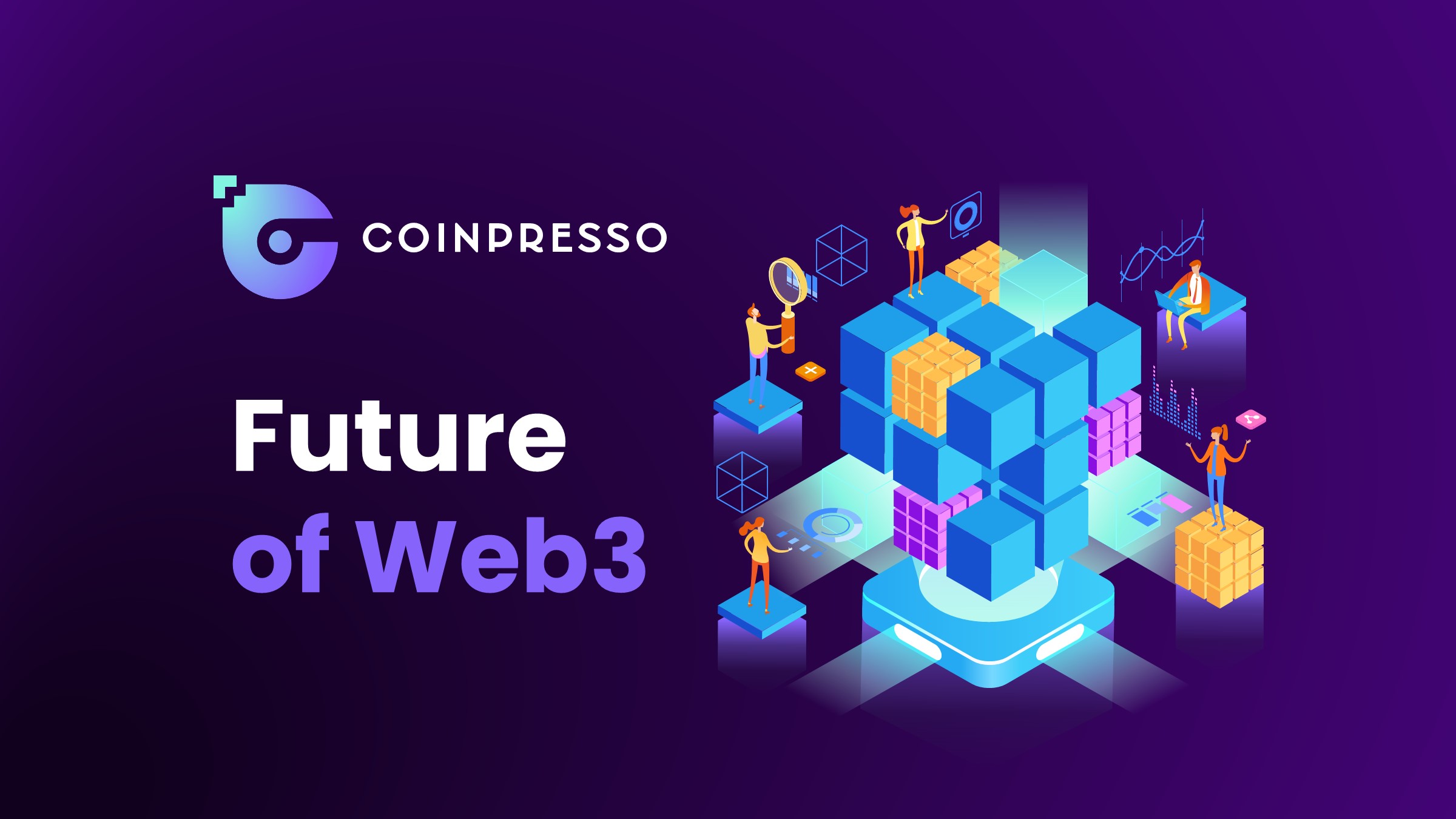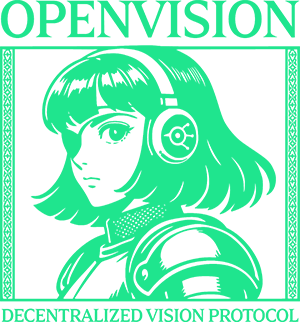
First introduced to internet users by Gavin Wood, one of Ethereum’s cofounders, the third iteration of the web, known as Web3, has been growing ever since.
Web4 and even Web5 have been theorized but may be decades off and perhaps not even necessary as Web3 continues to develop apace, having just concluded its first decade.
Today we’ll look at what Web3 is, how it's different from previous iterations of the web, the technology that drives it, and a glimpse into its possible (or likely) future.
What is Web3?
Web3, put simply, is the result of an effort to decentralize the internet that became a possibility through the advent of blockchain technology. Web3 successfully removes the need for trusted intermediaries and third parties to, for instance, manage data, facilitate transactions, and provide security for users.
Web3 enjoyed a surge in popularity in 2021 and continues to gain traction.
Evolution from Web 1.0 to Web3
To better understand Web3, we must also educate ourselves about the previous versions: 1.0 and 2.0. There are even some suggestions that Web 2.5 is playing a vital role in onboarding users from versions 2 to 3.
Let’s take a look at what each means:
Web1 is now known as the static web and represents the first sites and pages published online. These pages were typically read-only and allowed users to gather information or news outside of previous mediums like Television, Radio, and Newspapers.
Web2, or the interactive web, ushered in the era of social media - something that remains ubiquitous today - and user-generated content. It took two decades, from the 1980s to the early 2000s for the web to begin involving the user as an active participant, allowing them to interact and engage with their favorite sites, brands, and media.
Web2.5 is a term sometimes used in, for example, the gaming industry, whereby blockchain elements may be used but deliberately obfuscated. An example might include a video game with both on and off-chain elements such as NFTs within the ecosystem. This approach was deemed to be useful as more educational resources were needed to explain the complex tech of Web3 in its early years.
Web3 is the latest iteration of the web (4 and 5 are at this point theoretical) and describes an on-chain experience that enables users to connect to websites via their self-custodial crypto wallets instead of via some sort of personal ID like an email address or social media account.
With a focus on user control, privacy, and financial empowerment, Web3 enables individuals to access inclusive opportunities to benefit from the ownership of digital assets by participating in decentralized networks. While Bitcoin is a decentralized network, the advent of Ethereum made Web3 possible through smart contracts, dApps, and scalability.
Web3 PR and marketing seeks to educate users on the benefits of using this new iteration of the web and help projects onboard these users.
Web4 is a theorized later edition of the web that may, for instance, amalgamate our physical and digital worlds. Sometimes known as the “Human Web”, Web4 could see bionic implants and connected devices seamlessly interacting with our everyday lives.
Web5 and beyond is almost entirely unforeseeable, but if technological development and innovation continue at the pace they are today, it is all but an inevitability. It is likely that AI will be involved, and possible it may include Quantum technology.
One could argue that Web3 - the focus of this article - is built upon ideological ideals combined with emergent technology. When ideology and technology combine, incredible results can be achieved.
Key Technologies Driving Web3
Web3 would not be possible without blockchain technology and all of its applications:
Blockchains - a type of distributed ledger technology, Blockchains are a type of advanced database that manage and record data, mostly related to transactions.
Cryptocurrencies - known as Coins, cryptocurrencies are typically the native governance and or utility token residing upon a blockchain, like Bitcoin’s Bitcoin $BTC or Ethereum’s Ether $ETH.
Tokens - token is a term used to describe digital assets on a blockchain that are not necessarily the native coin. Tokens can be both fungible (divisible) and non-fungible.
dApps & smart contracts - key technologies that depend on each other, Smart Contracts are self-executing programs that power decentralized applications and other uses of blockchain tech, once certain parameters are met.
NFTs - Non-fungible tokens represent 1:1 ownership of an entire asset that cannot usually be divized.
Metaverses - less popular in 2025, metaverses represented virtual worlds that incorporated the technologies listed above.
Over time, this list of key technologies is likely to grow, and could already expand to include cross-chain bridges, rollups, and more.
The Role of NFTs in Web3
Non-fungible tokens or NFTs, once poorly understood, now represent a major component of all Web3 interactions.
Holding an NFT bestows total ownership and control over the asset to the holder. In a video game, this would mean that the developers could not delete or move a player’s favorite in-game item, for instance.
However, the application of NFTs can be far more meaningful than simple in-game items, and could expand to include the deeds of ownership of real estate, a tokenized real-world asset such as a Lamborghini, and more.
Recently, early adopter NFTs have been used by projects to bestow eligibility for airdrops, such as the ZKSync’s Libertas Omnibus collection.
Real-World Applications of Web3
There are so many real-world applications of Web3, that it would be impossible to describe them all in this article, so instead, we’ll simply look at some of the biggest use cases for the technology today:
DeFi - Decentralized Finance has empowered individuals to create generational wealth for themselves and their families by, for instance, farming yields and providing liquidity to pools with high APY returns.
GameFi - as mentioned throughout this article, gamers can sell assets they have earned from gameplay but don’t want, to other players on live on-chain marketplaces.
SocialFi - by placing our social media accounts and posts on chain through platforms such as Nostr, users can combat the censorship that is rife on networks such as Meta’s Facebook.
Challenges and Barriers to Web3 Adoption
Despite Web3’s burgeoning growth, there are a number of barriers to its mass adoption, including:
Upfront costs - each on-chain transaction must be paid for with a “gas fee”, often in that chain's native currency. This requires users to “on-ramp” funds to the chain first, and this has not always been easy or comfortable for newcomers.
Unfinished products - many crypto projects publish detailed roadmaps, and are years away from representing final versions.
Inaccessibility - some projects focus more on the technology than the value it delivers, resulting in jargon-heavy and complicated propositions launching to market.
Poor marketing - a previous reputation as a spammy “wild west”, Web3 must earn hard to deliver excellent Web3 marketing services on par with the best that Web2 has to offer.
Unsustainable economics - Cryptocurrencies are famously volatile, and this is often a result of bad “tokenomics”. An example would be large amounts of a new coin given to Venture Capital that dump it on launch, causing early retail investors to see big declines in value.
Regulation - the industry as a whole is not regulated in major areas of the world, and semi-regulated in others. Few governments have embraced Web3 the way El Salvador has, for example, by making cryptocurrencies legal tender.
The Future of Web3
With more major brands - recently Sony - moving towards adopting blockchain technology, it is likely that Web3 will become part of everyone’s lives whether they know or like it, or not.
Ethereum Layer-2 scaling solutions like Sony’s Soneium and the advent of new blockchains continue to onboard millions of users to Web3. Previous successes include NEAR Protocol’s Sweatcoin app, and more recently Telegram’s TON Network has seen hundreds of millions of users start to play on-chain games within the popular messaging app.
The future of Web3 is paradoxically bright and also cautious, as the unclear regulatory landscape worldwide continues to affect the day-to-day activities of users - some countries outright block access to crypto-related platforms, whilst others offer tax incentives to holders.
It remains to be seen just how bright the future of Web3 will be.
How to Prepare for Web3
The best time to get prepared for Web3 is to start yesterday, the second best time is to start today.
Here are some simple steps you can take to help prepare yourself for Web3 both today and in the future:
Step 1 - get an education: learn about Web3 by reading some of the great resources available online, like the Coinpresso crypto blog.
Step 2 - try it out (but protect yourself): create a wallet and fund it with your first coins. Make sure to write down your seed phrase, avoid malicious projects, and check out the legal environment of your country first!
Step 3 - advocate for it if you like it: tell your friends and get their feedback and advice about crypto.
In this article, we’ve learned about the past, history, and future of the internet's third iteration: Web3. For more insights, follow us on X @Coinpressoteam.



































